McCormick was born on the 620-acre farm known historically as “Walnut Grove Farm” in 1809. He built the first practical grain reaper, which was successfully demonstrated in a field of oats owned by John Steele in nearby Steeles Tavern in 1831.
USA
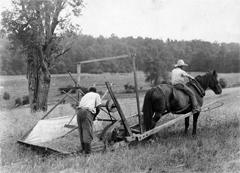
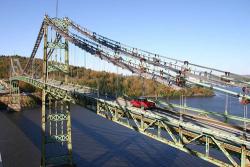
Designed by David B. Steinman, of Robinson & Steinman, New York City, the Waldo-Hancock suspension Bridge is a significant example of Steinman's work. David Steinman is considered among the most important suspension bridge designers of the 20th century. He earned an engineering degree from Columbia University in 1909 and went on to apprentice with Gustav Lindenthal, then at work on New York's Hell Gate Bridge. In the 1920's, Steinman emerged as an outstanding and innovative suspension bridge designer.
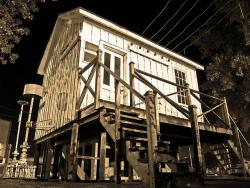
The plant began operation only twenty-six days after Thomas Edison's first steam plant began operating on Pearl Street in New York (NL 46). On September 30, 1882, an Edison "K" type dynamo produced electricity from a water-powered turbine to light three buildings (two paper mills and the H.J. Rogers home), at rate of about 12 1/2 kilowatts. It is the first Edison hydroelectric central station to serve a system of private and commercial customers in North America. The story of its development provides keen insight into the nation's first experiences with the electric light.
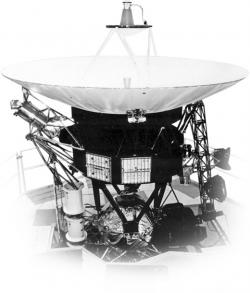
The Voyager explorers, which provided scientists and the world with the first detailed pictures of faraway planets, were designed and tested during 1972 to 1977. The two most intelligent machines ever built in the NASA space program, the explorers were launched from Cape Canaveral, Fla., in 1977. Voyager 2 was launched first on August 20, followed by Voyager 1 on September 5.
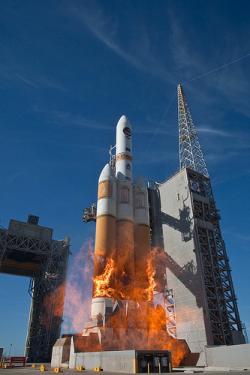
Vandenberg Air Force Base was the nation’s first space and ballistic missile operational and training base. Beginning with its first launch, a Thor Intermediate Range Ballistic Missile (IRBM) on December 16, 1958, it has been the launch site of many of America’s military satellites and polar-orbiting satellites.
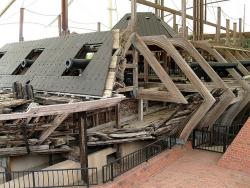
The Cairo is the sole survivor of the fleet of river gunboats built by the Union during the Civil War with the object of controlling the lower Mississippi River. Designed by Samuel Pook and built by James B. Eads, it saw limited battle and was sunk on the Yazoo River in 1862 by newly developed electronically detonated mines, becoming the first craft ever sunk by this predecessor to torpedo technology. The 175-foot ironclad vessel had 13 guns.
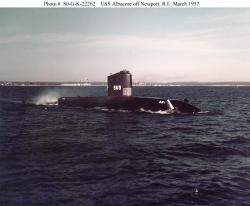
The USS Albacore (AGSS-569) represented a radical change in submarine design. The hull was designed with underwater speed as the prime requirement, and it was built with newly developed high-strength steel (HY-80). In addition to these two major innovations, the Albacore served as a test vessel for many new designs in submarine technology so that they could be refined before implementing them into the fleet. Among them was the testing of various control designs and correlation of actual sea-trial performance with that predicted in tow-tank tests.

In 1930, the U.S. Corps of Engineers was directed to complete an engineering survey of the Tennessee River to determine the feasibility of establishing complete river navigability. The resulting report recommended a series of nine main river dams and several tributary dams to allow for a minimum eight foot channel (standard for barge navigation) from Knoxville to Paducah.

This research and development complex was established by the founders of Universal Oil Products (later named UOP) to develop key products for the oil-refining industry. The processes created here profoundly affected the refining, treatment and conversion of crude oil and the development of the petroleum and petrochemical industries. Conceived as a combination of quiet academic retreat and industrial plant, Riverside attracted many of the world's leading petroleum scientists and a dedicated support team. Between 1921 and 1955, Riverside research resulted in 8,790 U.S. and foreign patents.
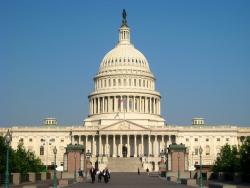
The United States Capitol is among the most symbolically important and architecturally impressive buildings in the nation. Construction of the original Capitol began in 1793, but it has been through several additions and alterations. Over its lifetime, the Capitol building has been built, burnt, rebuilt, extended, and restored.
Innovations
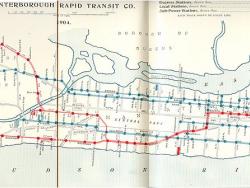
In the 19th century, New York City was a burgeoning industrial and commercial metropolis - the largest city in the United States and second largest in the world. As the city's population increased, people began to call for construction of an underground railway. Many unusual engineering…
Read More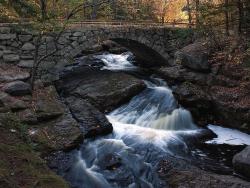
"Some of New Hampshire's most aesthetically pleasing yet least appreciated structures are stone arch bridges."
From: Stone Arch Bridges of the Contoocook River Valley, New Hampshire Profiles, May, 1978 by Raymond Gibson
These five bridges, Carr Bridge (mid 1800's), Gleason…

The Granite Railway Company of Quincy was the first commercial railway in the United States. Incorporated in 1826 and designed by Gridley Bryant, the railway relied on horses, rather than steam locomotives, to draw the cars along the tracks. Its primary purpose was to transport granite from…
Read More
When first proposed in 1819, the Hoosac Tunnel seemed so logical. It would provide an efficient and direct route for the Boston and Albany Railroad, whose pathway meandered 20 miles along precipitous grades. Early proponents, however, could not have imagined that blasting a 4.75 mile tunnel…
Read More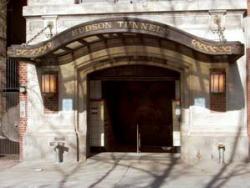
A transportation tunnel under the Hudson River connecting Manhattan and New Jersey was first considered in the 1860s, fueled by New York City's rapidly growing congestion and the inadequacy of existing ferry service to population centers across the river. DeWitt Clinton Haskin, an engineer…
Read More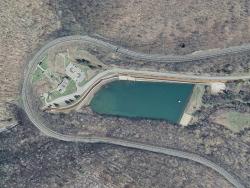
One of the earliest and most impressive of America's great railroad engineering feats, the Horseshoe Curve was built as a means of overcoming a straight-line grade over the geological feature known as the Allegheny Escarpment or Allegheny front, which separates the ridge-and-valley section of…
Read More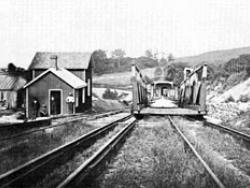
Morris Canal was built to transport coal from the Lehigh Valley of Pennsylvania to industrial markets in Newark and New York. The total length of the canal was 106 miles. The canal climbed an astonishing 914 feet from Newark Bay to the summit at Lake Hopatcong, and then dropped 760 feet to the…
Read More
The Hydraulics Laboratory at The University of Iowa, renovated in 2001 and in 2003 renamed the C. Maxwell Stanley Hydraulics Laboratory, is the oldest university-based hydraulics laboratory in the U.S. that continuously has focused on research, education, and service in hydraulic engineering.…
Read More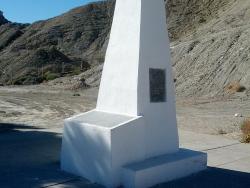
William Emory was an 1831 graduate of the U.S. Military Academy at West Point. When the Mexican War broke out, he was assigned as chief engineer officer to General Stephen Kearny, whose army traversed largely unknown territories in the West. The U.S. War Department would later print 10,000…
Read More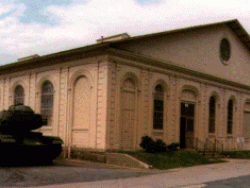
The Watervliet arsenal complex originally was built to house and manufacture weapons for the War of 1812. During the Civil War, it specialized in gun cartridges and artillery carriages. The facility today is a primary site for making state-of-the-art tank cannon, howitzers, mortars, and…
Read More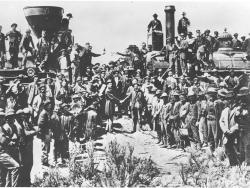
"May God continue the unity of our Country as this Railroad unites the two great Oceans of the world."
- Inscription on the ceremonial Golden Spike
The symbolic Golden Spike, staked in Promontory, Utah in 1869, marked the completion of the first transcontinental railroad,…
Read MoreAfter more than 50 years of contention and debate, dredging began in 1911 on an eight-mile channel connecting Puget Sound, Seattle's gateway to the Pacific, to two inland freshwater lakes, Lake Washington and Lake Union. With the completion of the Lake Washington ship channel and Chittenden…
Read More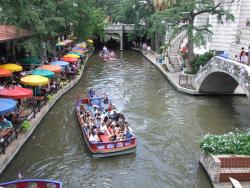
San Antonio's River Walk, a catalyst for abundant commercial and tourism enterprise, is generally regarded by cities and urban planners throughout the world as a prototype for the development of urban riverfront sites. The River Walk's success, however, would not have been possible without a…
Read More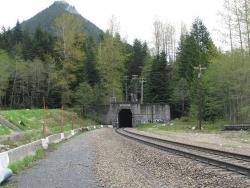
In the years following the Civil War, the land west of the Mississippi River was being settled and the Pacific Northwest explored. There remained, however, a large portion of Montana, Idaho, and Washington that contained enormous quantities of timber and minerals, but was not accessible by rail…
Read More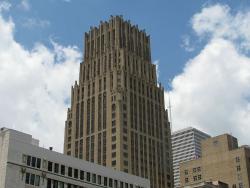
The tower was designed to rest on a continuous reinforced concrete mat, 4 feet thick, with the base of the slab 24 feet below street level.
What makes the Texas Commerce Bank Building revolutionary in the civil engineering world is not so much the building itself, but its foundation. …
Read More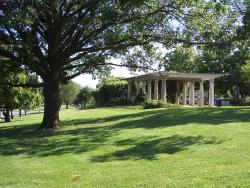
"Who in Europe, or in America for that matter, knows that Kansas City is one of the loveliest cities on earth? [...] the residential section is a masterpiece of city planning [...]; Few cities have been built with so much regard for beauty."
- Andre Maurois, French author and lecturer…
Read More
The 1.5 mile Lacey V. Murrow Bridge was the largest floating structure in the world and the first to be built of reinforced concrete when completed in 1940. The bridge consisted of typically 300-foot long pontoons floated to site and rigidly connected to form a continuous structure and…
Read More
The Chamberlain is the only surviving bridge of the original five. The others were replaced as the river rose due to flood control dams put in place over time.
For its first 30 years of statehood, South Dakota was effectively two states. The Missouri river cut across the land forming a…
Read More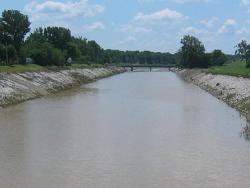
In 1915, a tropical storm dropped nearly 11 inches of rain on St. Louis in just 17 hours, causing a devastating flood. Claiming 11 lives and the homes of 1,025 families, the flood focused public and government attention onto the problems of the river.
In the early 1900s, St. Louis…
Read More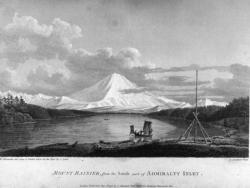
The voyage of Captain George Vancouver, 1791 -1795, was commissioned by the British Admiralty to map in detail the west coast of North America from Mexico to Alaska and to meet with Spanish authorities on the coast to enforce the terms of the Nootka Sound Convention of 1790.
Departing…
Read More

